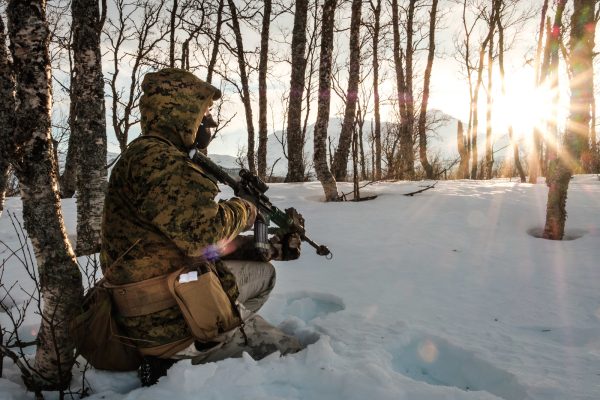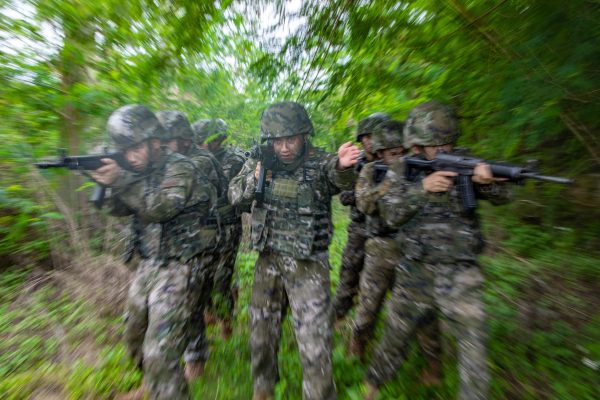These two major geopolitical events have reignited calls for greater European independence on defense and security — at least from France and at least in theory. In practice, this means getting serious about the development of credible capabilities. A starting point should be advancing Europe’s stalled multinational tank project by involving a new key player: Italy.
The next European-made heavy tank, the Main Ground Combat System (MGCS), will help define the future of ground warfare when it enters service around 2040. Historically, land combat has been dominated by large, slow-moving vehicles with advantages in firepower and troop protection. But, as fewer troops are deployed in favor of more unmanned technology, and as future battles shift to other domains including cyber and space, heavy tanks are expected to play a lesser role. This has led to a reconsideration of land warfare capabilities, with a growing preference for warfighting systems that combine manned and unmanned capabilities, and enable greater interconnectivity across platforms. This debate has been shaping what Europe’s next tank should look like.
The MGCS vehicle was originally launched as a project between France and Germany in 2012, as both countries looked to replace their Leclerc and Leopard 2 heavy tanks, through a joint venture between Nexter and KMW, now known as KNDS. However, different strategic visions from the two countries on the future of land warfare and the participation of Rheinmetall in the program, as desired by Berlin, seem to have changed the situation.
Strategically, France sees the next tank as a smaller and more agile vehicle than those traditionally produced — one that has the firepower of a traditional tank, but can move faster across multiple terrains both in Europe and overseas, where France is active in out-of-area operations. Germany, on the other hand, is closer to Europe’s Eastern Flank where a conventional confrontation with Russia might occur. It favors something that looks more like the tanks in service today. Industrial disputes have also risen (as they always do with European multinational defense projects.) The two countries also disagree on the main armament. Germany would prefer the Rheinmetall 130 mm/L51 gun, the French would prefer the innovative Autoloaded Ascalon by Nexter.
The project could benefit from involving other European countries. In May 2021, the German government indicated its willingness to expand the initiative, so long as it could agree on terms with France. Interest from another major European player could be just what is needed to get the project back on track.
One country with a close interest in this is Italy, a European powerhouse with a strong defense-industrial base, a major role in European politics and security, and the third-biggest economy in the European Union (EU.) Prime Minister Mario Draghi has restored Italy’s role at the heart of EU affairs, along with France and Germany, making it an important player in the debate over European autonomy and defense capabilities. Italy too is seeking a replacement of its main battle tank, the Ariete, around 2035, which coincides with the MGCS timeline.
At the industrial level, Italy can offer technological capabilities to strengthen Europe’s next tank. The possible entry of OTO Melara and Wass into the project, providing sensors and electronics, could bring Italian expertise directly into the project, while also giving Italy a voice in the development phase. While this does not answer questions around the vehicle’s main armament, it would benefit both Italy and Europe in two ways.
First, Italy’s entering the project with Leonardo and Iveco-OTO Melara (known as CIO, a joint venture between Leonardo and Iveco Defense Vehicles) units would benefit from decades of expertise in land vehicle development. Second, it further strengthens the project’s European character by adding Italy as another political and industrial contributor. it would serve European interests by equipping another country with the vehicle and would — like all multinational projects — spread the very significant development costs, estimated at $1.8bn up to 2028.
At the strategic level, Italy could help shape the tank for future defense needs, in line with its own view of future potential conflicts (i.e., likely to happen in large, clustered urban areas, or “Megacities,” including in the Indo-Pacific). If involved, Italy would help ensure the new tanks are developed with high levels of troop protection, agility, and digital interconnectivity; characteristics that fit both France’s vision for the MGCS, as well as Europe’s (and America’s) growing geopolitical focus on China and the Indo-Pacific. This could directly serve European interests from a hard security perspective by equipping the continent with a vehicle that is designed for tomorrow’s wars and making Europe a more capable defense actor. Furthermore, given France and Italy’s recent defense cooperation agreement, and growing political cooperation between Germany and Italy, it makes sense to include a third major project partner.
The addition of Italy to MGCS could help get the project over the finish line and ensure Europe’s next tank is fit for current and future security requirements. Industrially and geopolitically, Italy’s contributions to the project would help Europe develop its own future-oriented land warfare capabilities, finding common political and industrial ground. While greater European defense autonomy is a political decision, functional, high-end equipment makes it credible.
Andrea Arivella is a political advisor intern at NATO Allied Transformation Command – NATO ACT (Norfolk, VA, US).
Gabrielle Moran is Executive Assistant to the Dean of the Center for Maritime Strategy (CMS).




